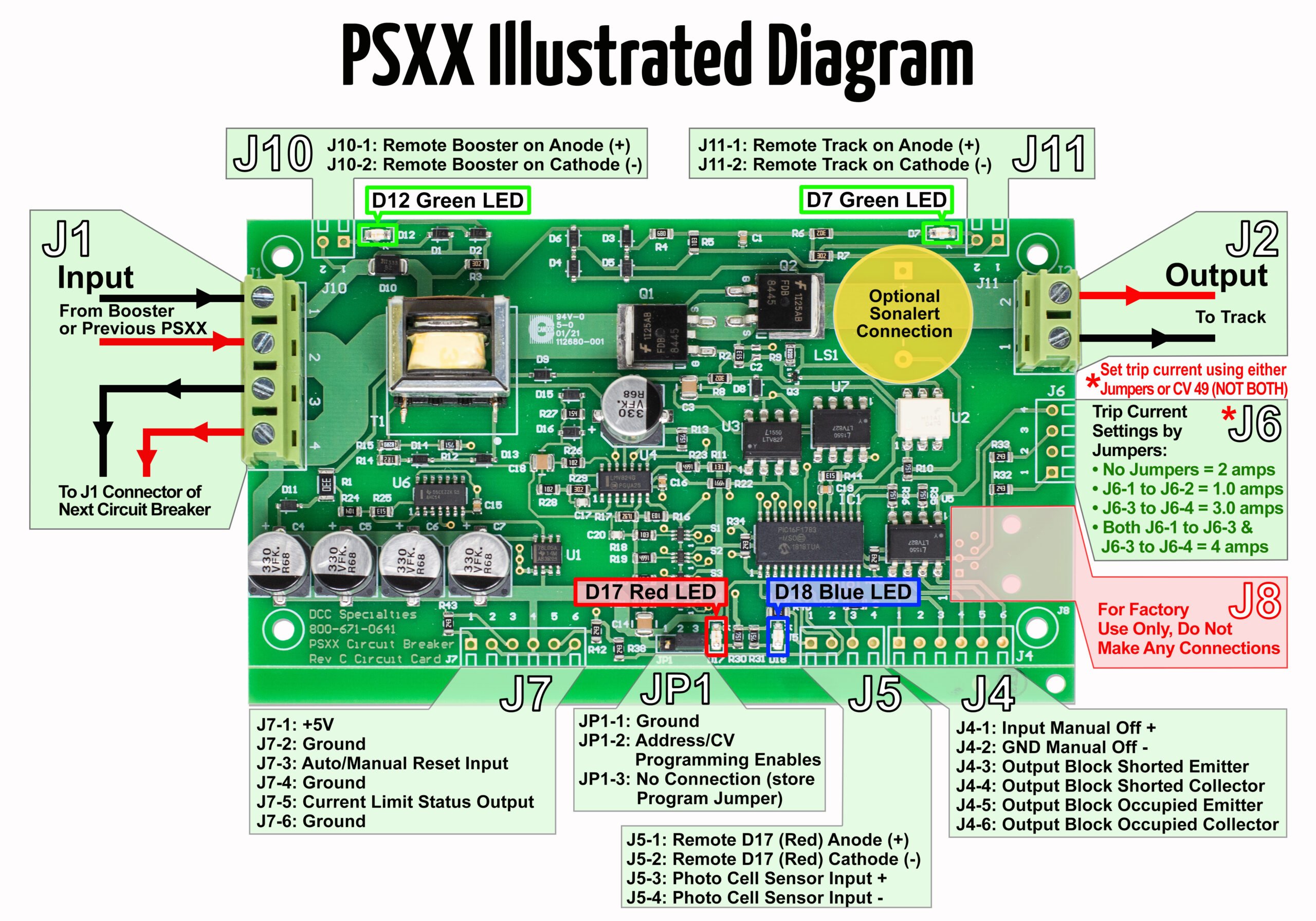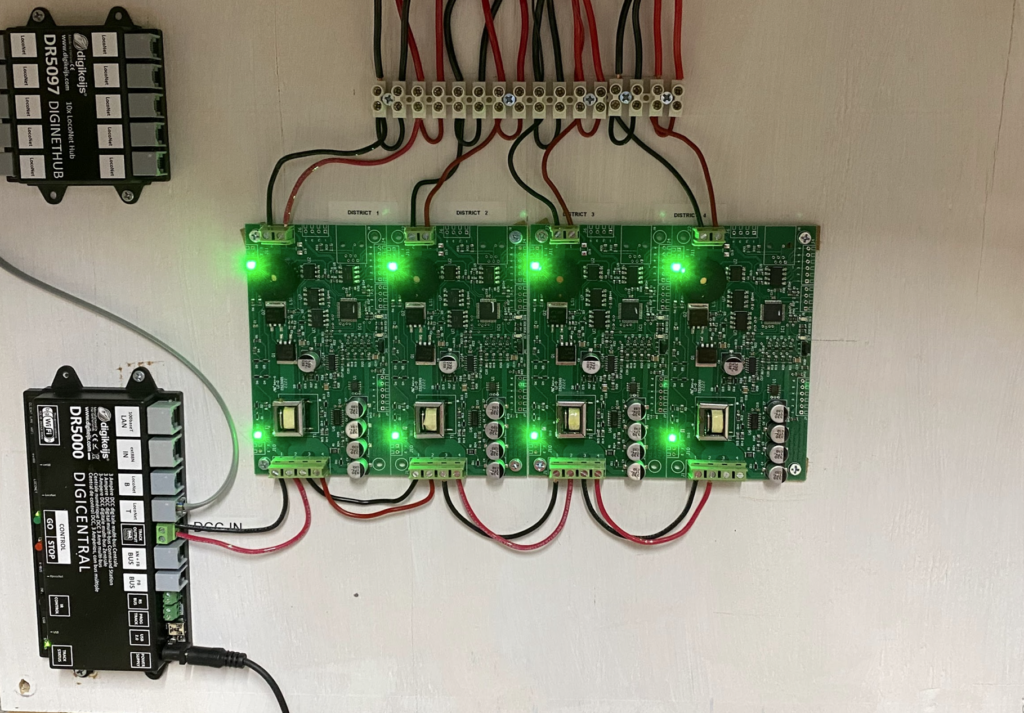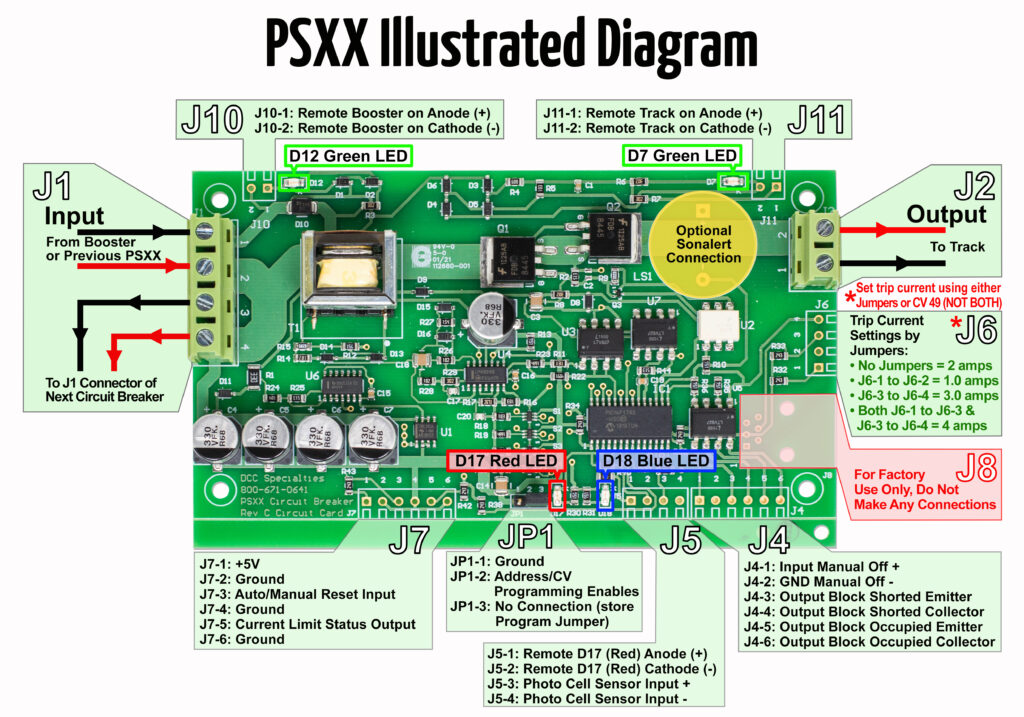Search results for:
 February 15 2023
February 15 2023 RailCom, PSXX, & Current Spikes
Hi guys,
Hoping you have some insight to a problem.
- I have a DR500 on my N Scale layout and the layout is broken into four power districts [see image below].
- Each power district has a dedicated PSXX.
- I have been doing my testing using non sound locomotives.
- I placed a Kato F7 A/B set with factory installed ESU micro5 decoders on the layout.
- The PSXX D18 blue LED started flashing as soon as they started moving and a few seconds later tripped the breaker.
- I removed the B unit and still saw the flashing PSXX D18 blue LED.
- I Removed the A unit and tried other locomotives I have with Sound.
- The ESU units seemed to trip the PSXX [D17 Red LED turned on].
- I then proceeded to replace the DR5000 with my old NCE Power Cab. No issues, ran three locomotives all with ESU sound.
- I put a RRampMeter V2 meter in between the command station & the PSXX units.
- There was a one volt drop from 13 to 12 when running three locomotives with horns and bells all
- The RRamp meter showed .30 amps.

- I went back to the DR5000 and put the meter in line same as I had done with the NCE Power cab system. The DR5000 puts out 14.4 volts and I could not get all three locomotive running without tripping the PSXX. The meter showed 0.24amps
- I then bypassed the PSXX and wired the DR5000 directly to block one. I was able to run all three locomotives and all sounds without tripping the command station.
- I then programmed the PSXX trip rate current to 3 amps.
- This had no noticeable affect on the tripping of the PSXX with the DR5000 and the ESU equipped locomotives.
- Note I switched out the Katos to Intermountain and Atlas all with factory installed sound and they all tripped the PSXX when running from the DR5000.
- So I ruled out the locomotives being the issue
What I don’t understand; why does the NCE Power Cab system, which has a lower current power output [max 2amps], not trip the PSXX, but the higher output DR5000 will trip the PSXX?
Have you seen this before? Can you offer me some help here? I’d rip my hair out if I had any.
Best Regards………………David B.
David:
- Check your DR5000 and make sure RailCom is turned OFF.
- Explanation: RailCom turns off the the DCC to allow for back communication and it does this many times per second.
- Each time DCC turns off, all the decoders on your layout remain functional by using stored charge on their input capacitors.
- Sound decoders particularly have large capacitors because of the higher load with sound functioning.
- When RailCom turns on again, all of the decoders look like a dead short until their input capacitors recharge.
- The result is that every time Railcom cycles, there is a large current spike (we have measured 3 to 4 amperes depending on the system and the decoders, which is why setting the trip current to 3 had little effect).
- Every active decoder on the layout (whether running or not) is drawing current to recharge the input capacitor.
- The PSXX is seeing these current spikes and counting them.
- The spikes occur frequently, they are counted as a short (they look the same as your train derailing and sparking through a turnout).
- The current spikes are relatively short in time and the average current your meter reads is well below the trip setting.
- Since the NCE PowerCab does not implement RailCom, there is no current spiking and hence the PSXX does not trip.
- Essentially the PSXX is telling you that there are a lot of current spikes in excess of the trip setting.
- If setting the trip rate to 3amps still allowed it to trip, you have current spikes in excess of 3 amperes.
- As a further note, the higher output voltage of the DR5000 will cause higher current spikes than the lower output voltage of the PowerCab, but as noted above, the PowerCab does not cause the spikes to begin with.

